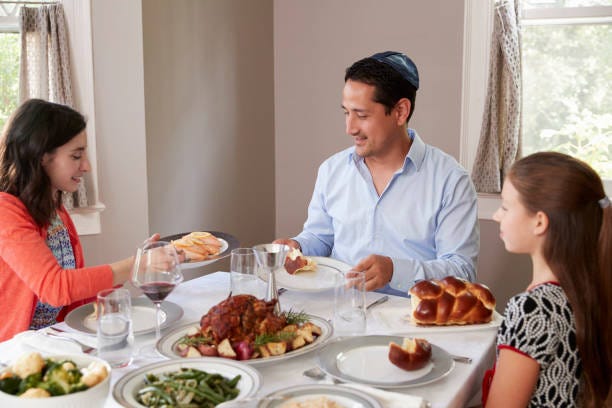Passover 2025: Here's what you need to know about the Jewish holiday

Passover began on April 12 and will continue through the upcoming weekend.
Passover is a Jewish holiday during the month of Nisan on the Hebrew calendar. It usually falls on a day in March or April.
The week-long holiday celebrates the Jewish Festival of Freedom, which commemorates the liberation of Israelites from ancient Egyptian slavery. It begins with a traditional seder meal, allowing people who practice the Jewish faith to reflect on their rich background.
What is Passover? Here's what to know about the Jewish holiday.
When is Passover 2025?
This year, Passover began on Saturday, April 12, and ends after nightfall on Sunday, April 20.
Every year, Passover begins on the 15th day of Nisan, the first month of the Jewish calendar. The celebrations last for seven or eight days, depending on where the holiday is celebrated. In 2024, Passover was April 22-30.
What is Passover?
Passover, also known as Pesach, is a Jewish holiday that celebrates the story of Exodus, when the Israelites were liberated from slavery in ancient Egypt by Moses.
How is Passover celebrated?
On the evening before Passover starts, Jewish people hold a special meal at home with friends and family called Seder. During Seder, the story of Exodus is read from the book "Haggadah," which includes stories, prayers, poetry and other teachings. Everybody takes part in this reading.
Typically, a Seder plate is made up for the special gathering and contains six parts that symbolize Exodus. These parts include:
- Beitzah: Hard-boiled egg symbolic of the festival sacrifice in spring and the spring season
- Chazeret: Lettuce representative of the bitterness of slavery
- Zeroa: Shank bone symbolic of the Paschal lamb offered as the Passover sacrifice during biblical times (chicken neck and beets are typical substitutes)
- Charoset: Mixture typically made of apple, nuts, spices and win symbolic of the mortar used by Hebrew slaves to build Egyptian structures
- Karpas: Celery or parsley dipped in salt water represents tears shed during Egyptian slavery
- Maror: Bitter herbs, typically made from horseradish, symbolic of the bitterness of slavery
In addition to the Seder plate, Matzah (flattened bread) and wine are also served.
What foods are eaten (and not eaten) during Passover?
During Passover, most Jewish people refrain from eating foods made from fermented grains, or chametz − wheat, spelt, barley, oats, and rye. This means no rolls, bread, pasta, flour tortillas, or cookies.
Chametz is avoided during Passover to reflect "the plight of the Israelites as they left Egypt," Aaron Kaufman, executive director of Penn State Hillel, previously told Paste BN.
"As the story goes, the Israelites had to leave Egypt so quickly, they didn't have time to bake their breads," Kaufman said. "They needed provisions for the long journey through the desert, so they had their dough, and they just threw it in their packs, and it baked on their backs in the heat of the sun into this flat cracker-like substance."
Matzah is made from wheat, but when it is made, the wheat flour is kept dry until it is mixed with water and immediately baked. According to Reform Judaism, it takes 18 minutes for flour to ferment and rise, so matzah must be prepared and baked in fewer than 18 minutes.
Should I say 'Happy Passover' or other greetings?
"Happy Passover" is an appropriate sentiment. You can also say, "chag sameach," which means happy holiday in Hebrew or "chag kasher v'semeach," which means have a happy and kosher Passover.
Contributing: Marina Pitofsky and Julia Gomez, Paste BN
Greta Cross is a national trending reporter at Paste BN. Story idea? Email her at gcross@usatoday.com.